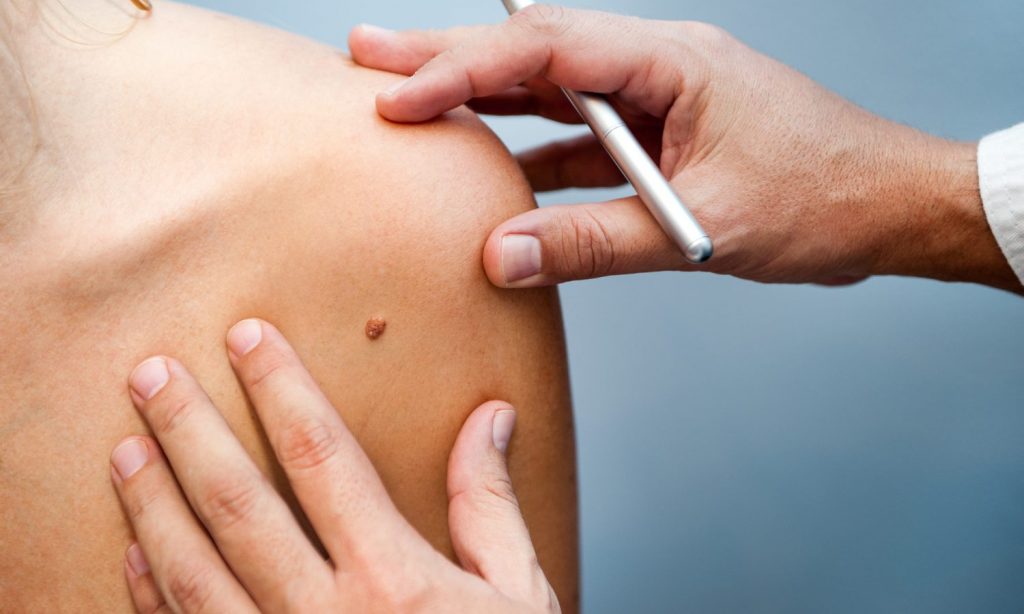In partnership with The Fresh Toast
Researchers are committed to gaining more information about melanoma, its potential causes, and ways people can protect themselves against this type of cancer.
Do you know that it has been estimated that there will be roughly 106,000 melanoma diagnoses in 2021? Sadly, the rates of the most serious type of skin cancer continue to increase. There are various risk factors to be aware of as well as preventative measures worth considering for long-term protection.
Several risk factors for melanoma have been revealed over the years, but the exact cause is unknown. As the medical community and experts learn more about this type of cancer, research studies like HERE are providing more helpful, educational, and detailed information to fight this disease.
Although each individual is different and genetically unique, melanoma can be caused by DNA mutations or similar changes that turn off what’s called “tumor suppressor genes”. Below is a list of ten important melanoma risk factors followed by ten preventative measures worth considering.
Top 10 Melanoma Risk Factors
Melanoma develops within the cells that are responsible for producing melanin (commonly referred to as melanocytes). Essentially, when something goes awry within melanocytes, melanoma occurs. The question of what damages DNA within skin cells and how and why this results in melanoma remains unanswered. However, certain risk factors like the ones included below could lead to the development of melanoma.
- Excessive ultraviolet (UV rays) light exposure
- Fair skin
- A family history of melanoma
- Having a large quantity of moles
- Weakened immune system
- Red or light hair
- Light eyes
- Older age
- A large number of freckles or a tendency to develop freckles after sun exposure
- At least five atypical/questionable moles
RELATED: Medical Marijuana Can Kill Viability In Melanoma Cancer Cells

Top 10 Melanoma Preventative Measures
Regardless of the severity and seriousness of melanoma, early diagnoses and proper treatment can improve one’s outlook for the future. Fortunately, there are different solutions and preventative measures one could take to decrease their risk of developing skin cancer including the following:
- Avoid tanning beds and lamps
- Avoid being out in the sun during midday hours when the sun’s rays are the most intense
- Wear sunscreen all year-round
- Wear protective clothes all year-round
- Closely monitor your skin in order to notice possible future changes
- Avoid sunburn
- Use broad spectrum sunscreen with at least a sun protection factor (SPF) of 30
- Liberally apply sunscreen at least thirty minutes before outdoor sun exposure
- Reapply sunscreen after swimming or sweating
- Perform regular mole checks (at home and by a dermatologist)
RELATED: Your SPF Moisturizer Is Not As Effective As Sunscreen, Says Study

To this day, researchers are committed to gaining more information about melanoma, its potential causes, and ways people can protect themselves against this type of cancer. Clinical trials are being conducted by most major research groups with the goal of helping the medical community better understand melanoma so that patients can receive the best assistance and care.
The Importance of Scheduling Consistent Dermatologist Appointments
In addition to regular doctor check-ups and exams, it’s recommended to schedule routine dermatologist appointments to survey your skin and any potential changes, especially if any risk factors apply to you. If melanoma is detected early, it can be combated and treated effectively.
Read more on The Fresh Toast
Advertising disclosure: We may receive compensation for some of the links in our stories. Thank you for supporting Irvine Weekly and our advertisers.

